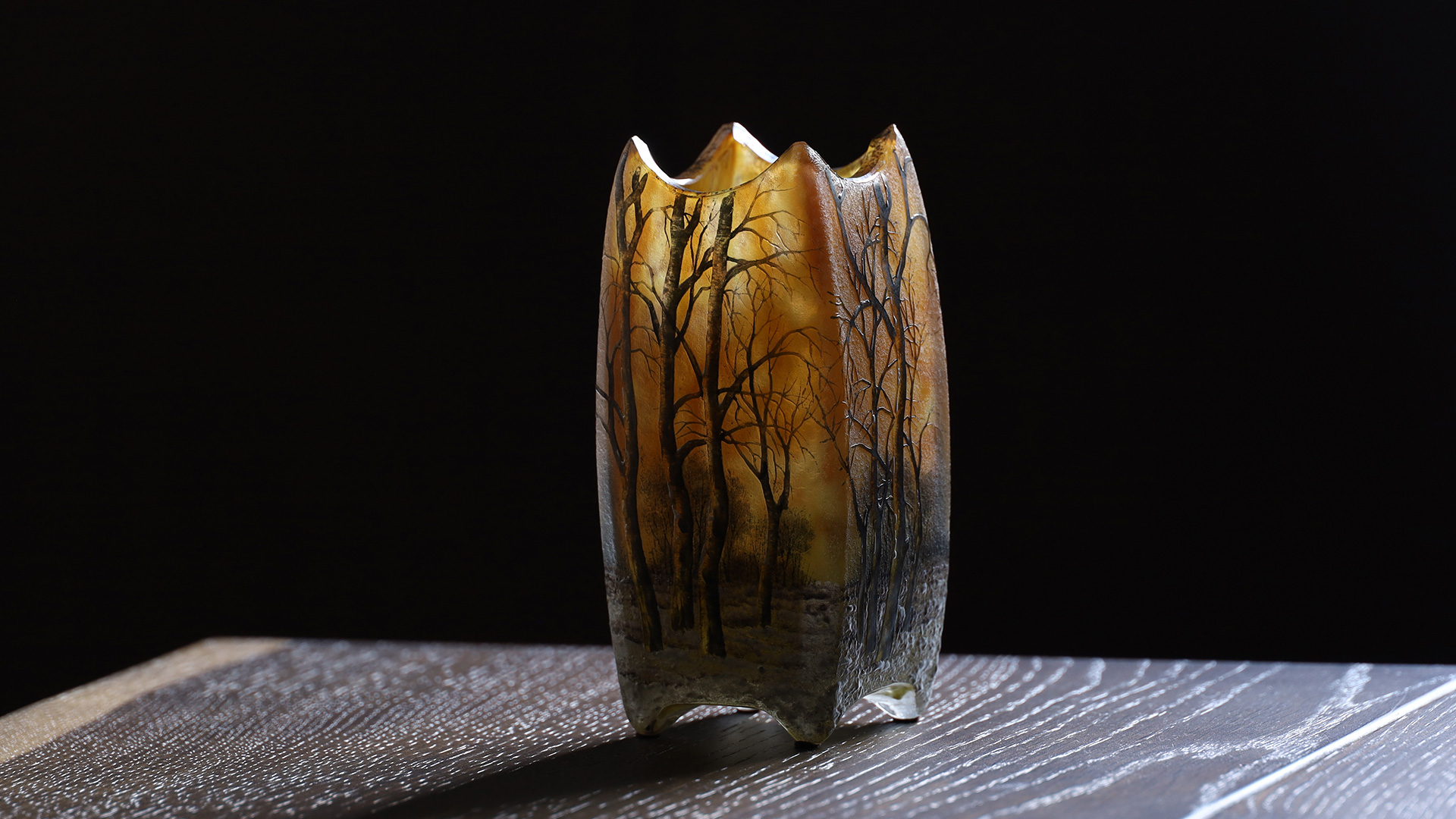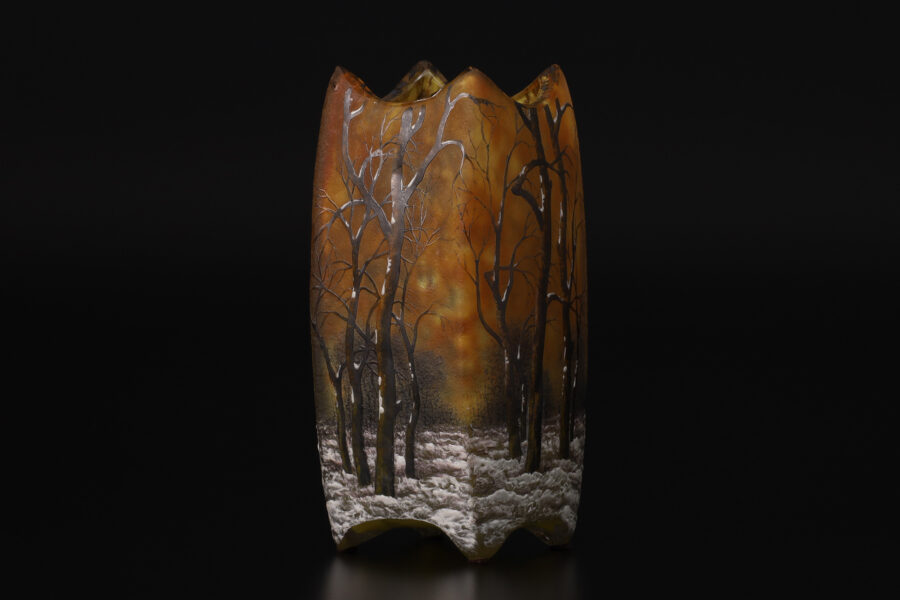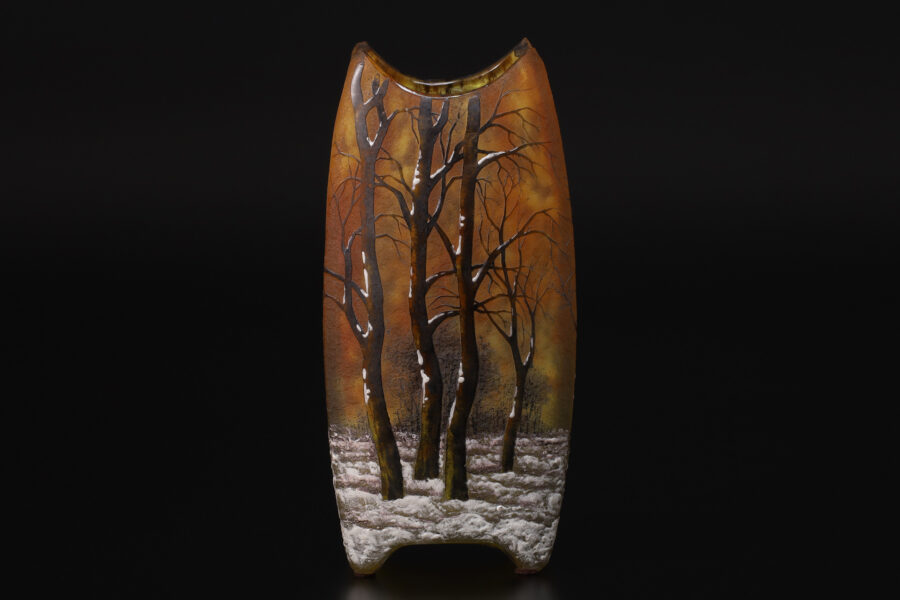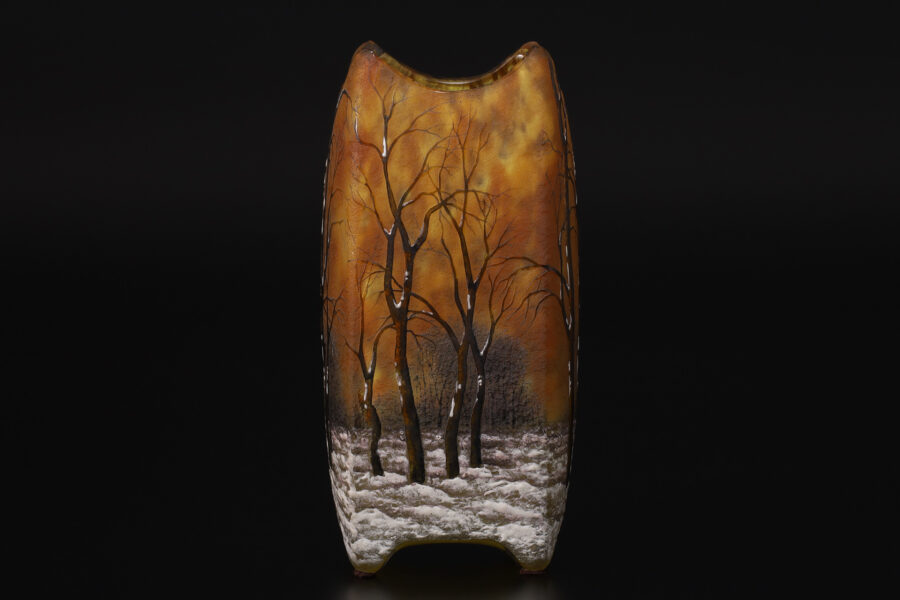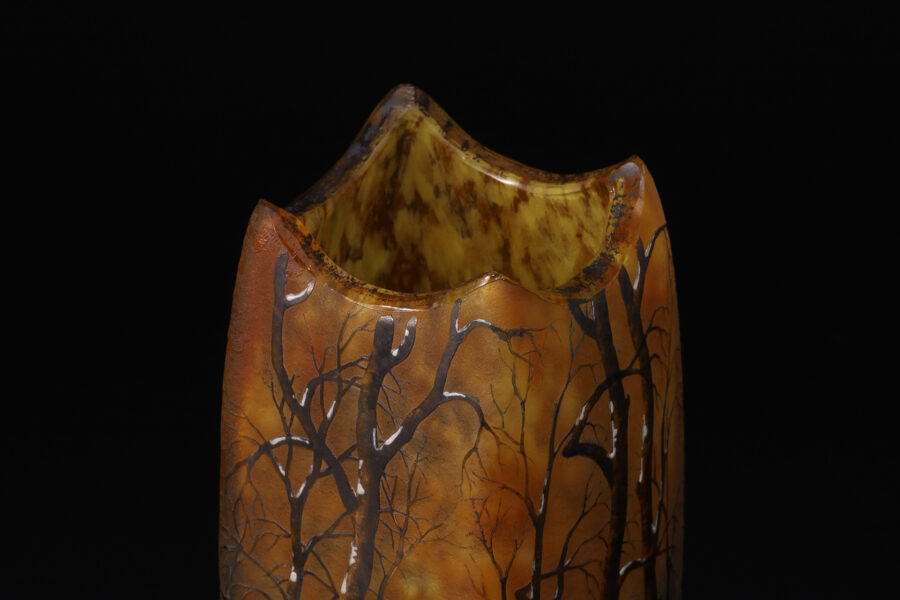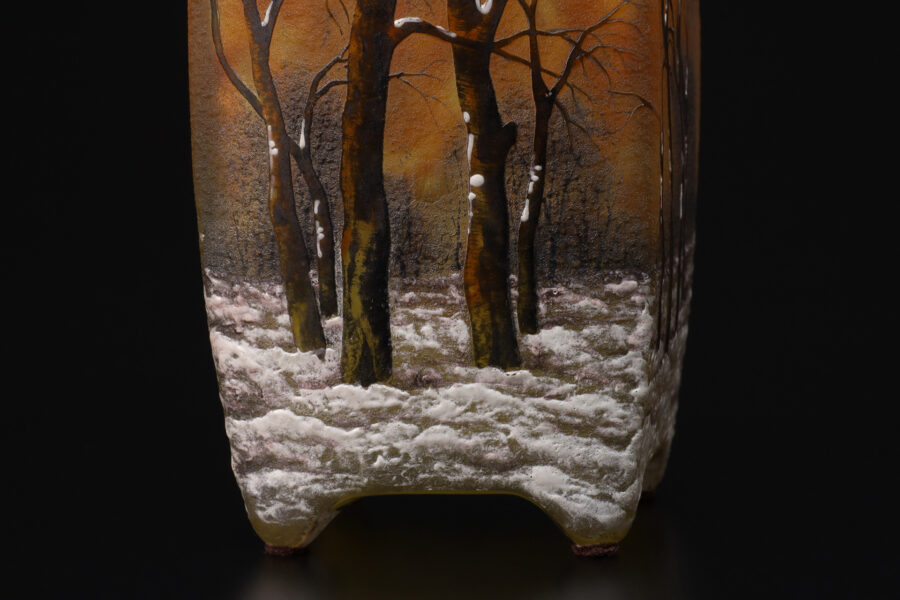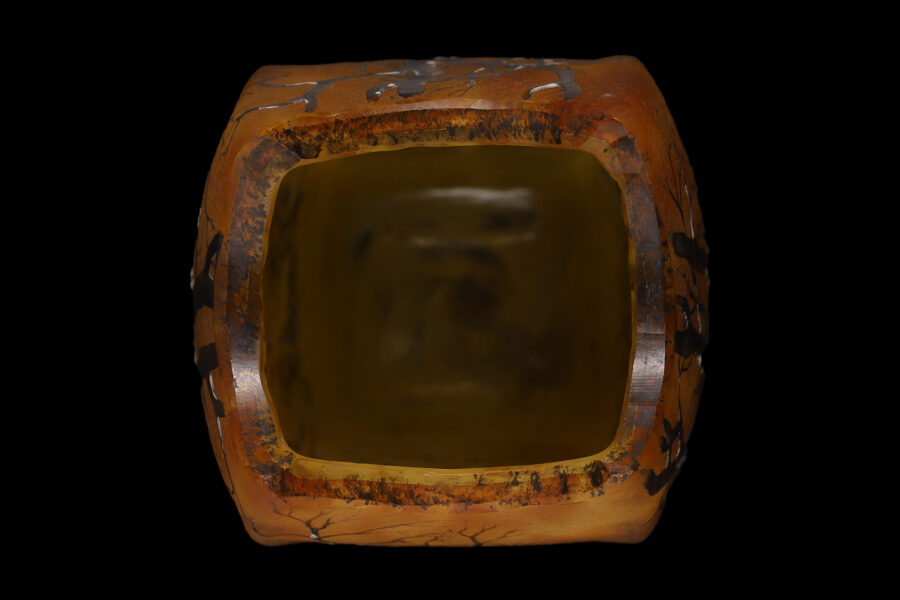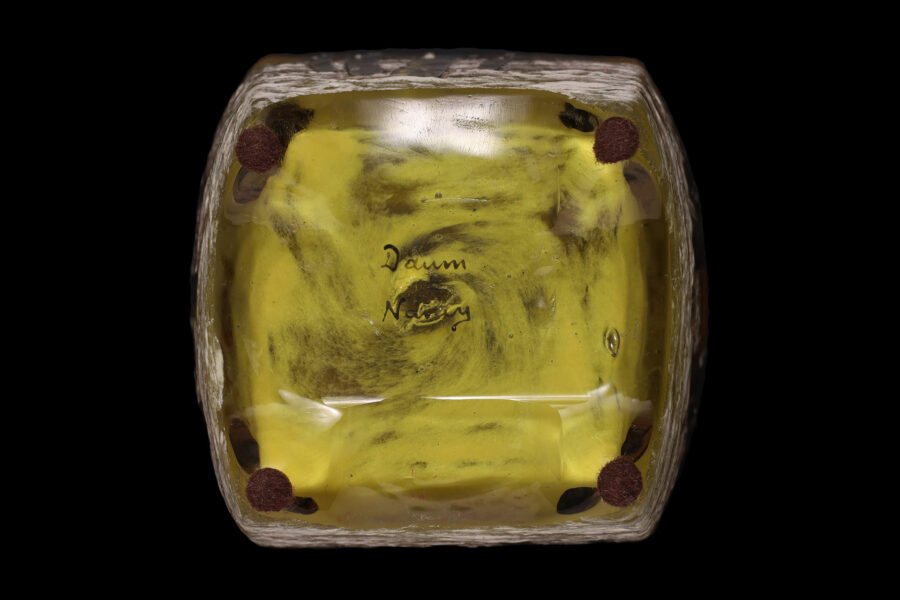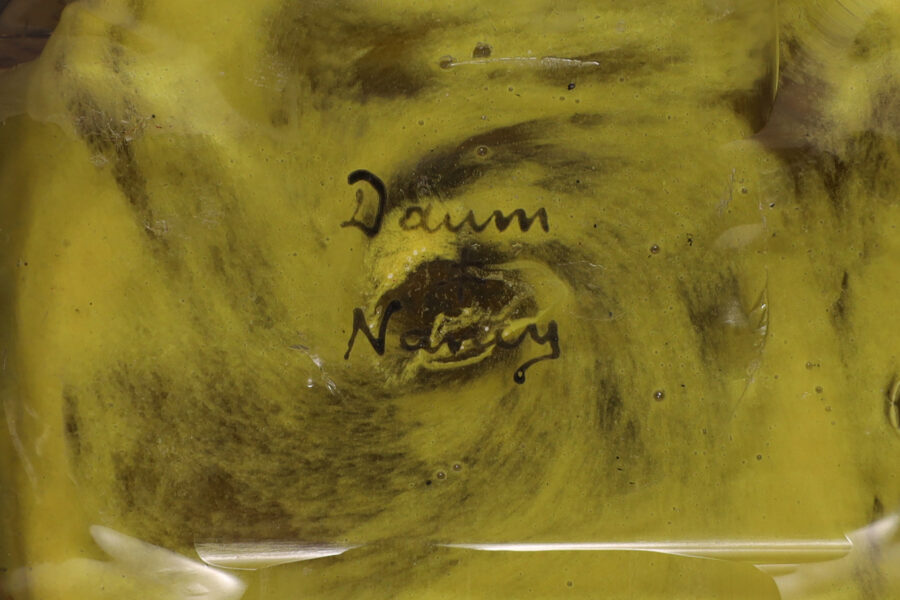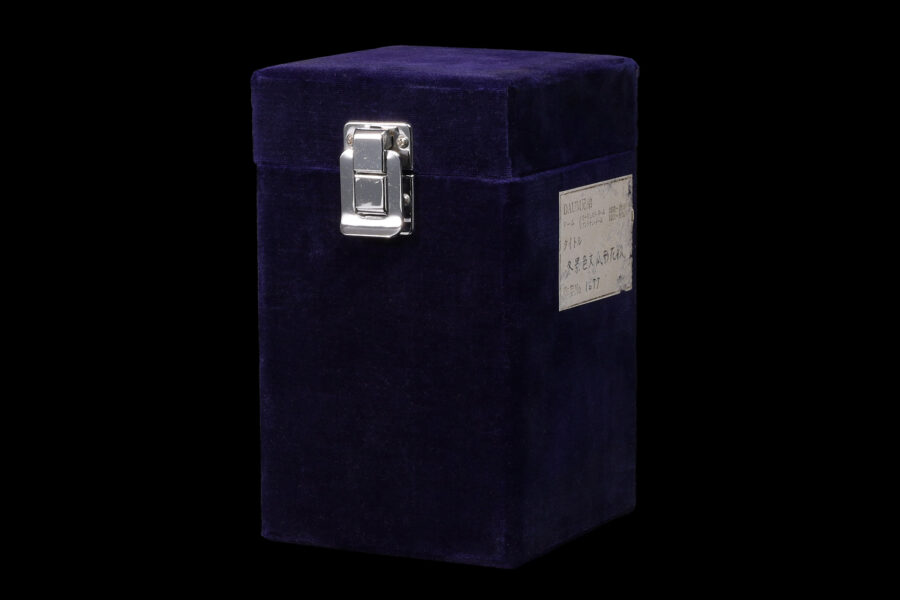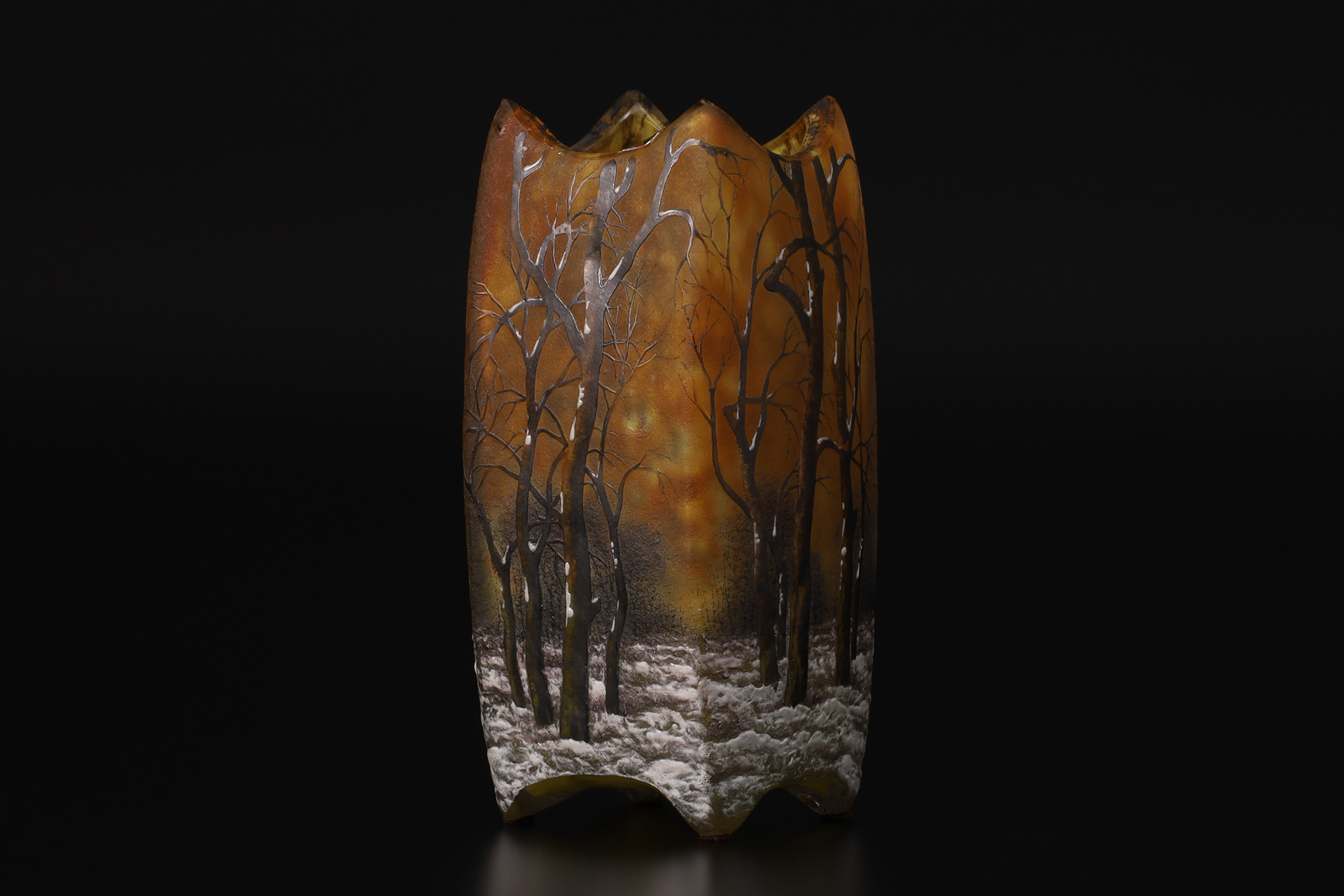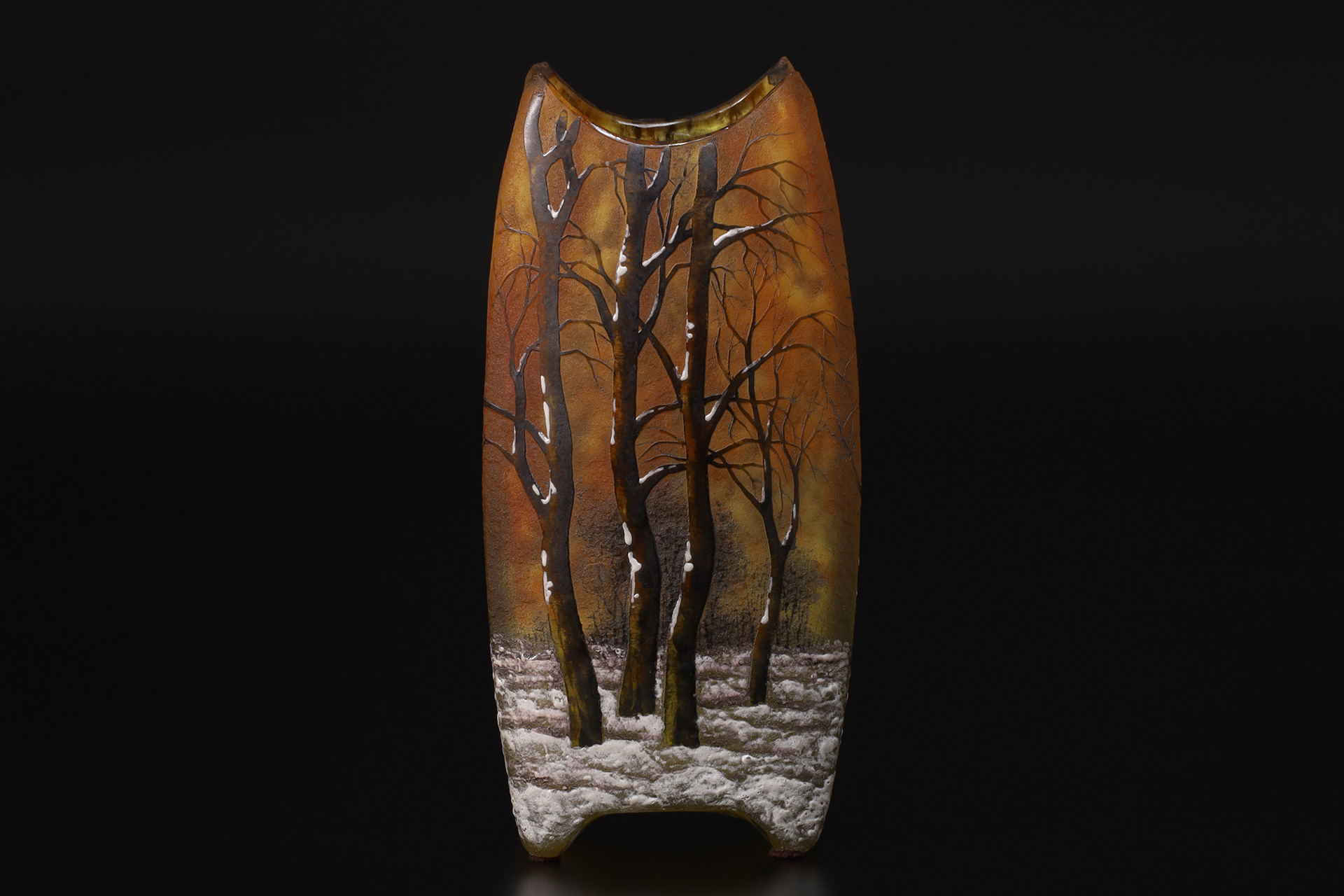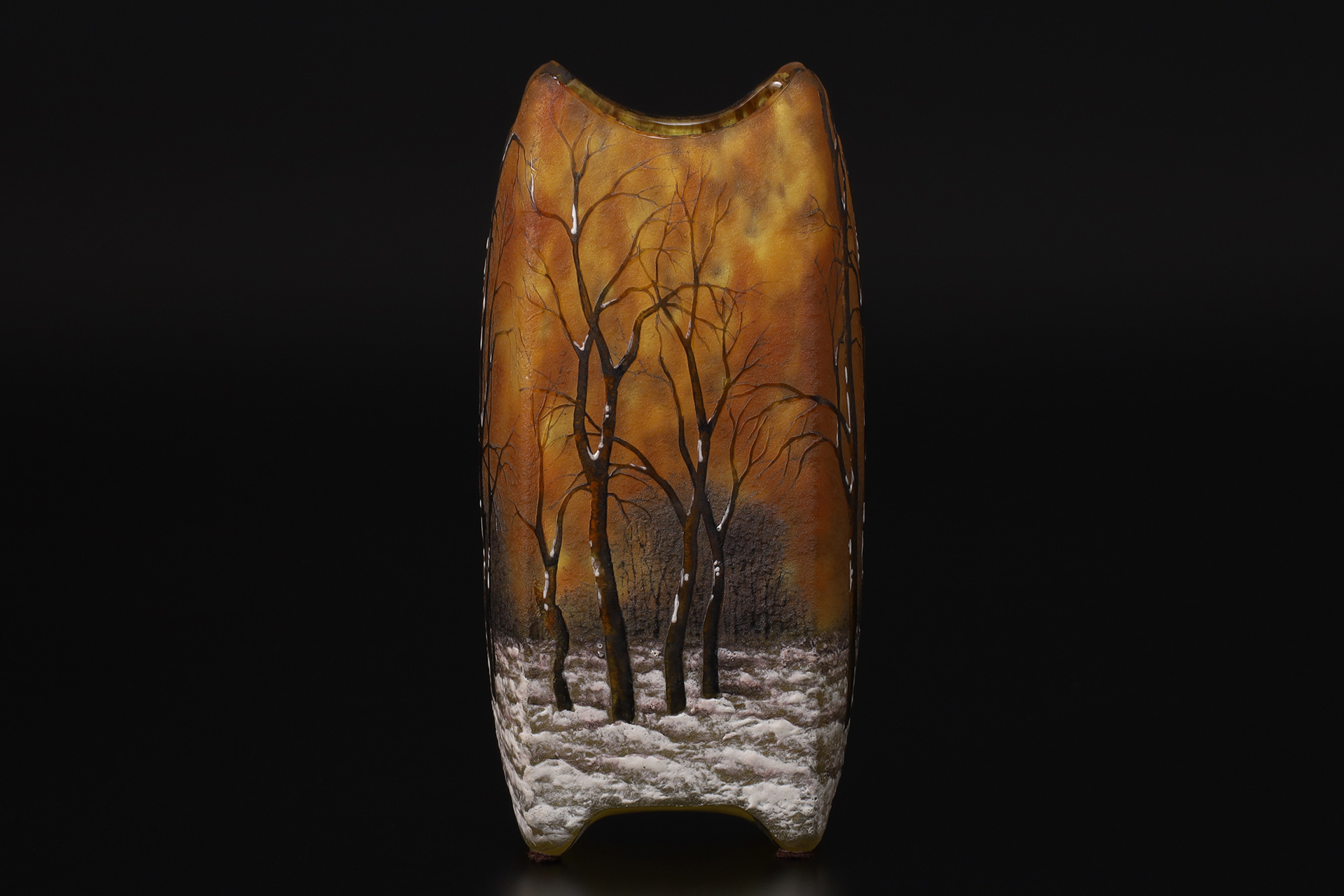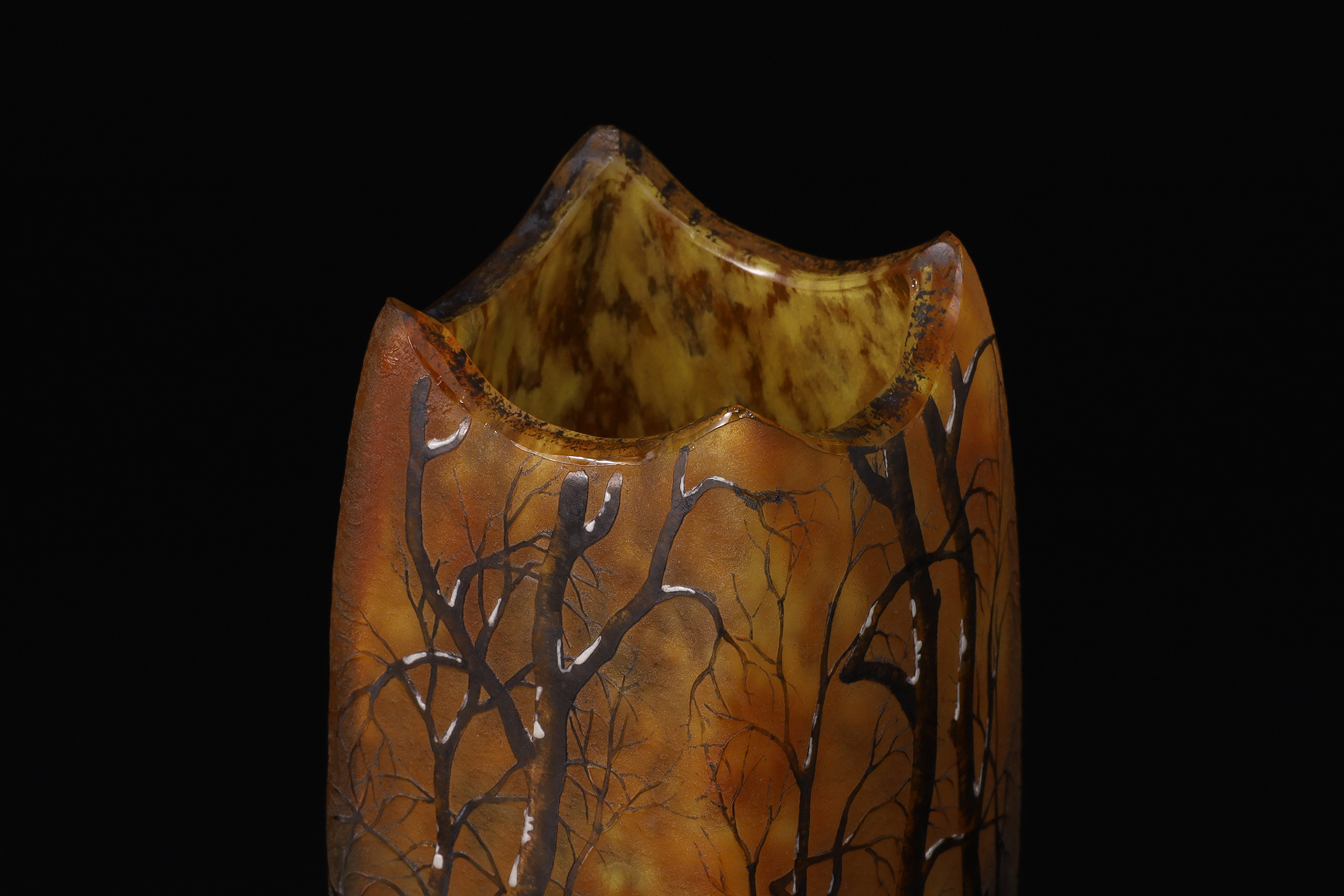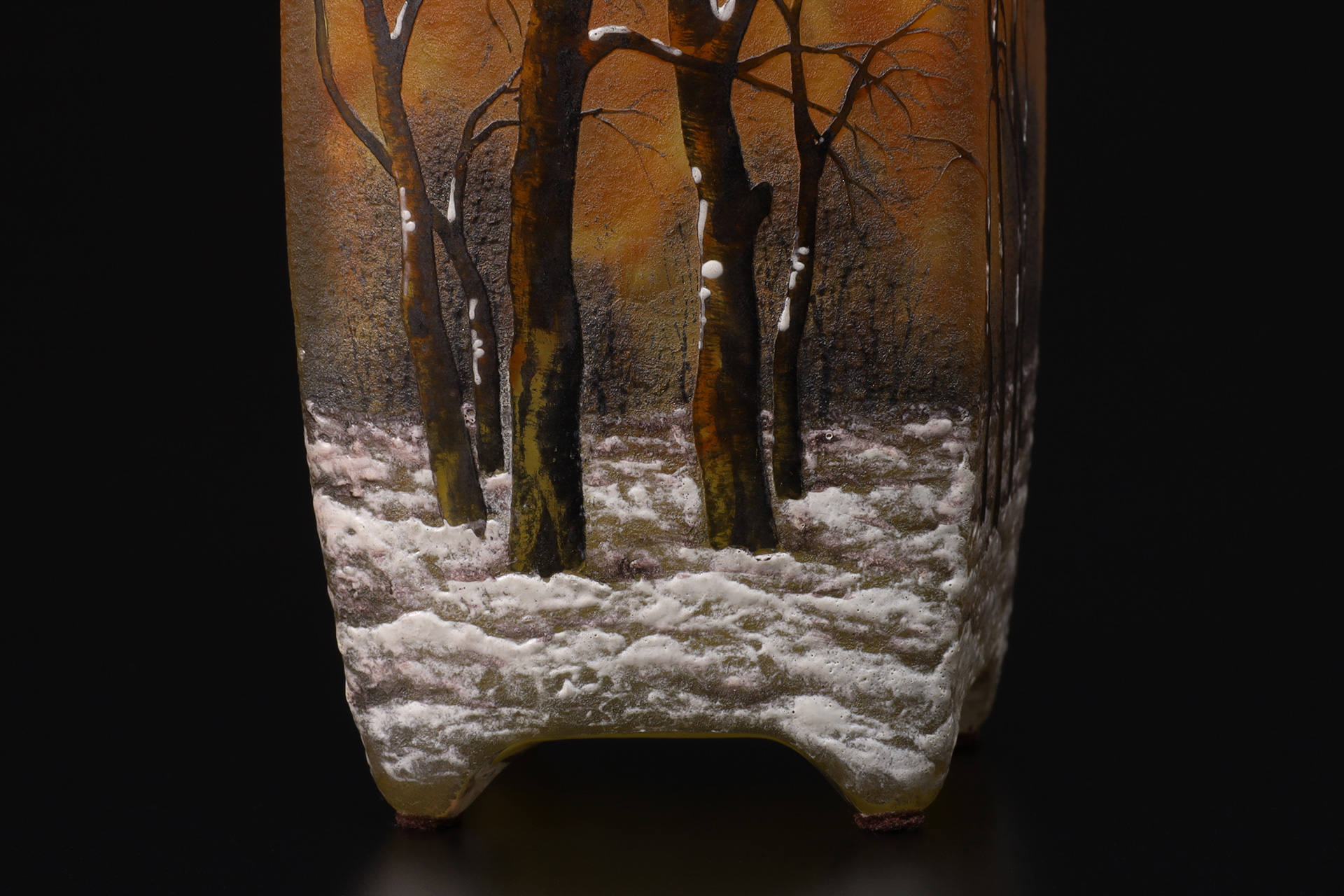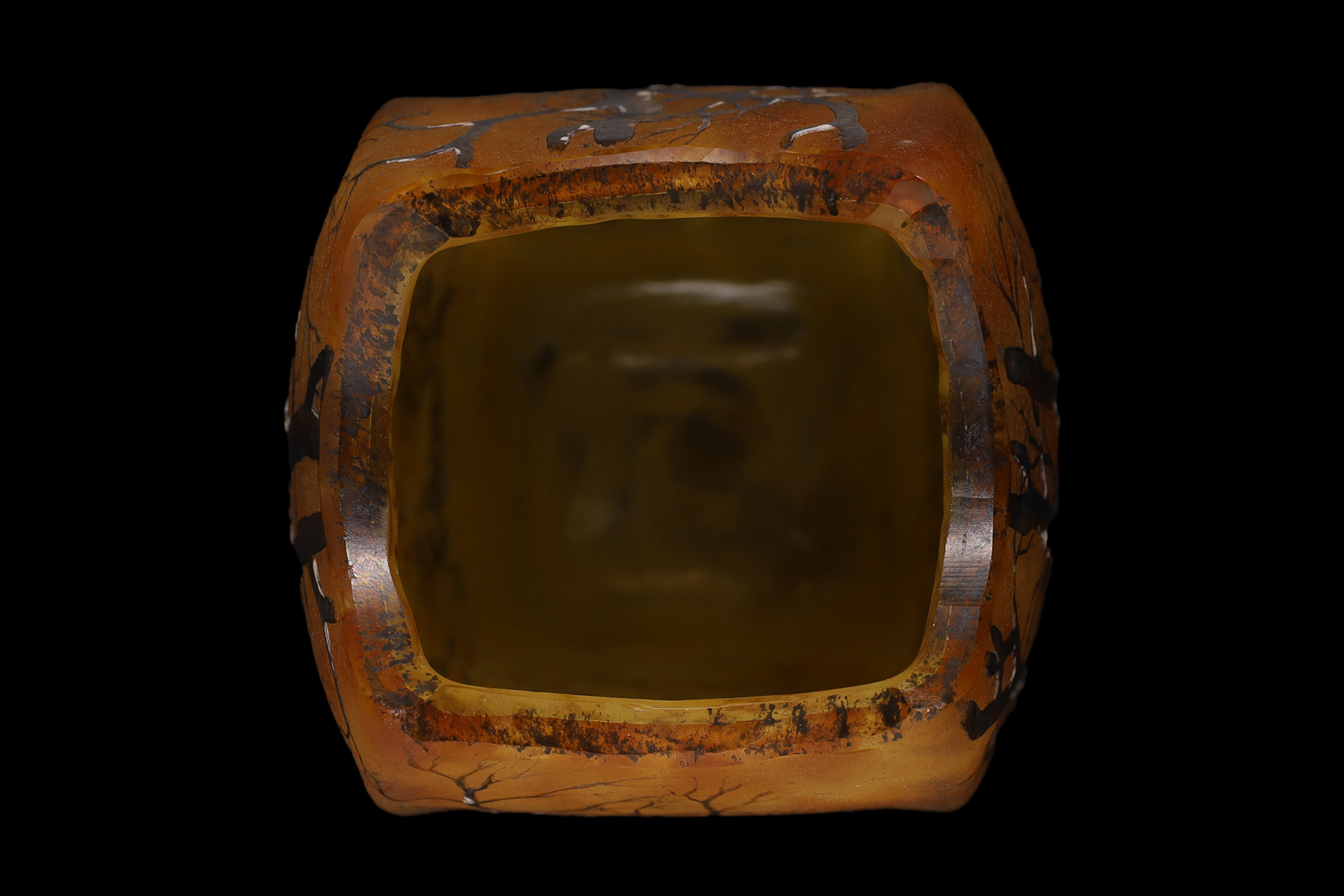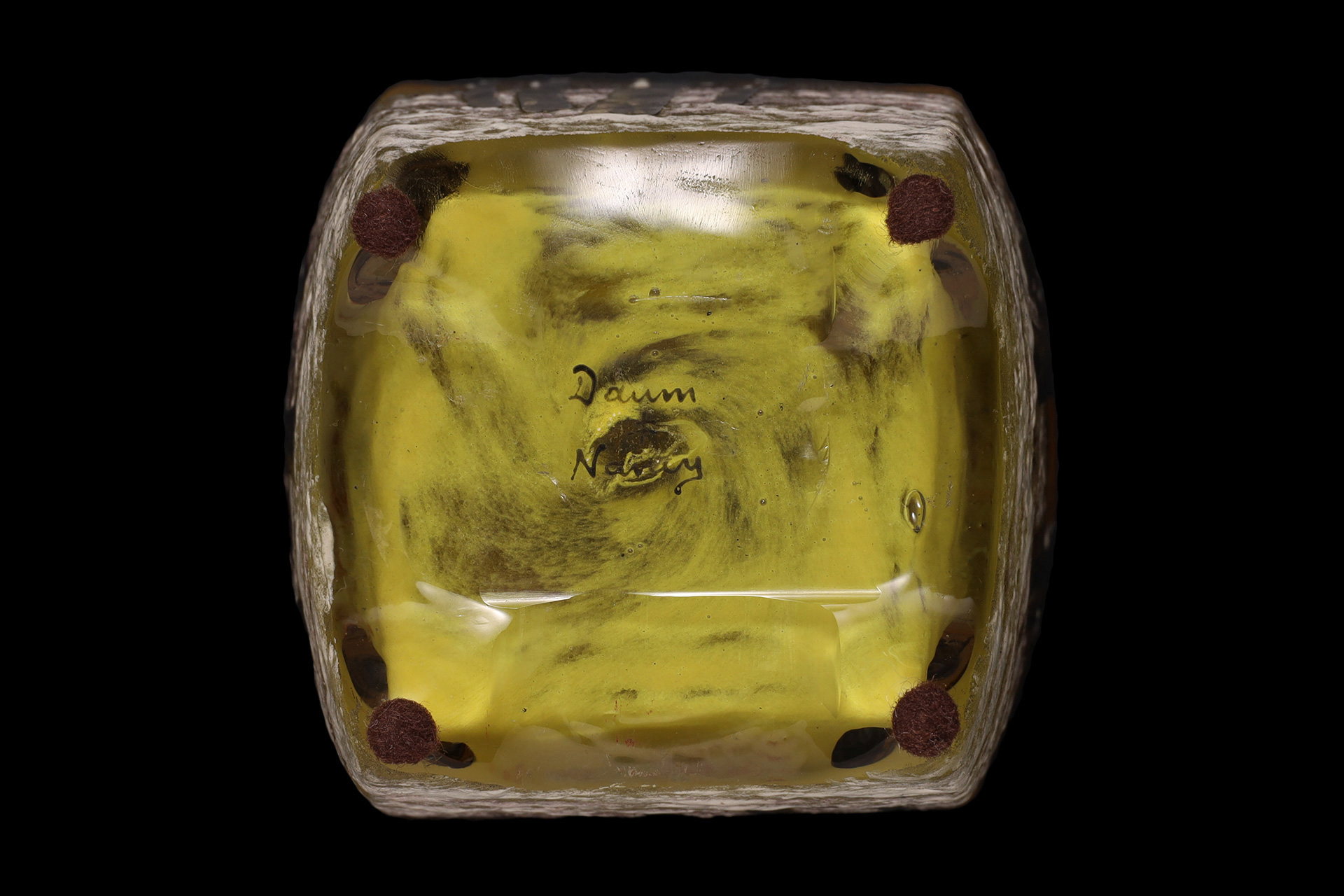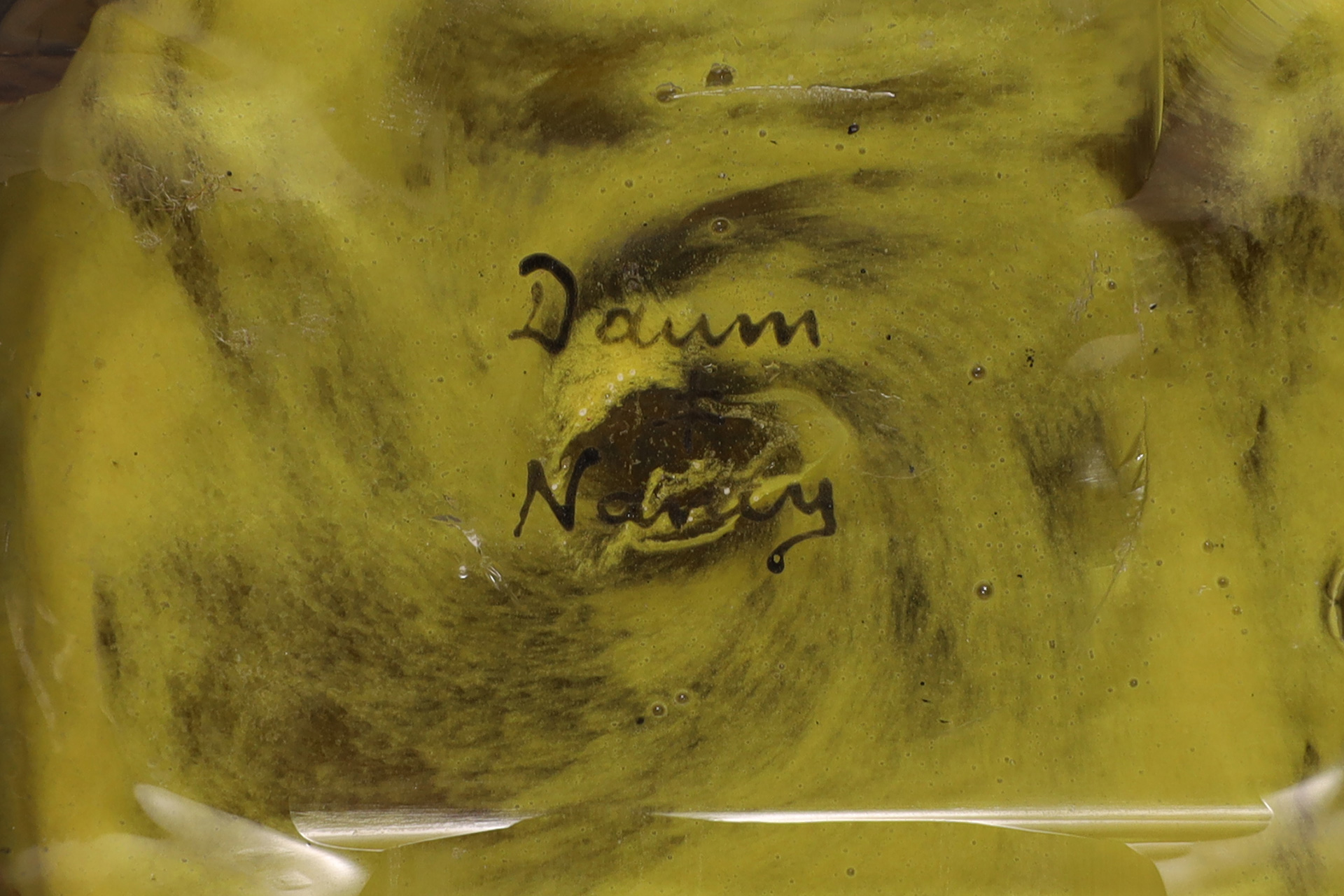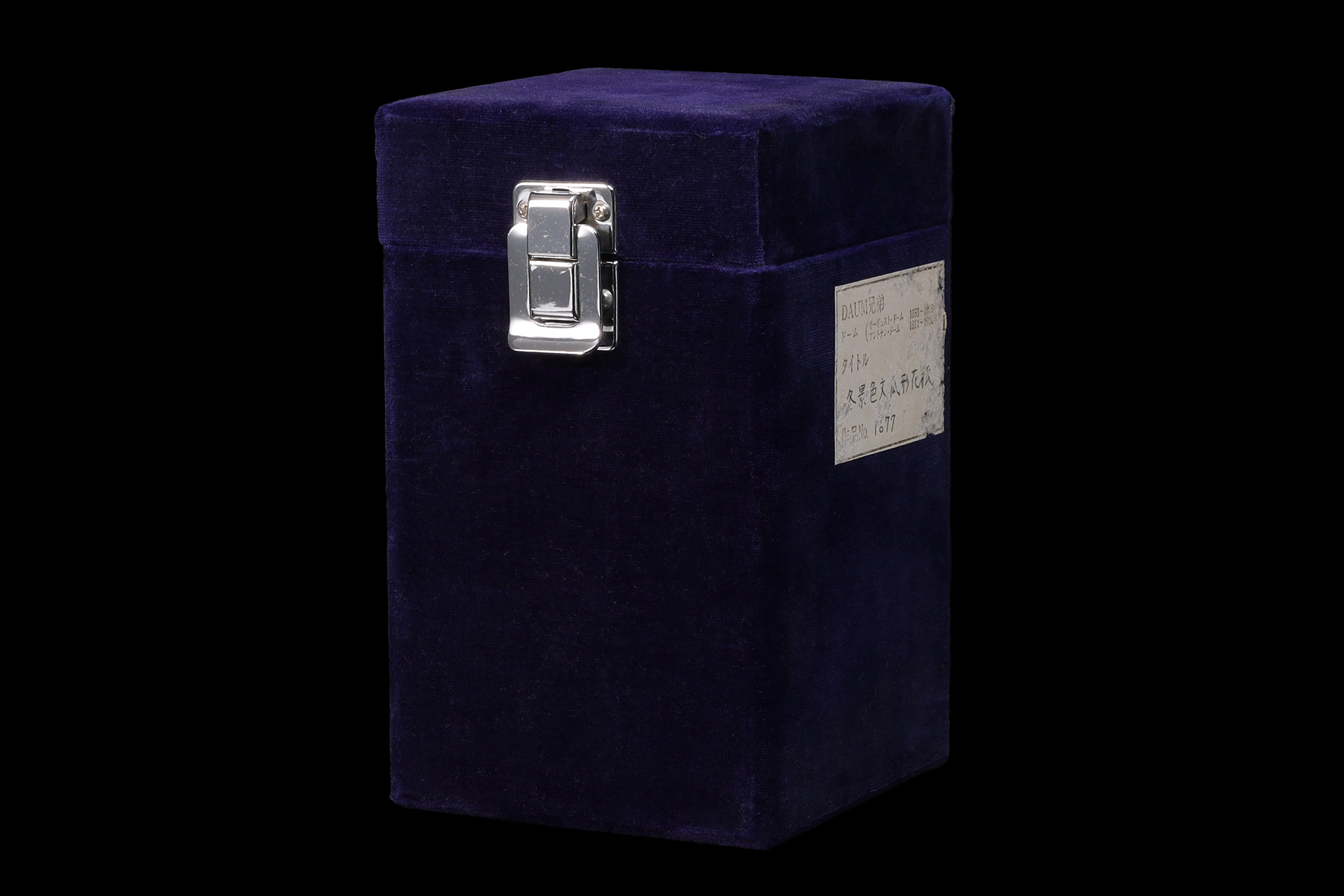An exquisite Art Nouveau masterpiece that captures a forest landscape enveloped in winter’s stillness, rendered with painterly composition and exceptional craftsmanship. The scalloped rim and gently undulating body create a soft, organic silhouette, imbuing the entire form with a quiet presence. As light touches the amber-toned surface, it glows faintly—revealing a dreamlike contrast between snowy white and the deep black of trees, leaving a lingering emotional resonance. This delicate portrayal of seasonal transition is among the most highly regarded motifs in Daum’s oeuvre.
- Artist
- Daum Frères
Late 19th century-Early 20th century
- Weight
- 542g
- Width
- 6.5cm
- Height
- 13.2cm
- Remarks
- Mold-blown, Marbled glass, Enamel decoration, Etching
- Accompaniments
- Dedicated storage case
- Condition
- Intact
It remains in excellent condition.
Daum Frères
The eldest son, Auguste (1853–1909), and the third son, Antonin (1864–1930), known collectively as the Daum brothers, were French glass artists who rose to international prominence as leading figures of the Art Nouveau movement. Their father, Jean Daum (1825–1885), hailed from Bitche in the Lorraine region. However, following territorial changes after the Franco-Prussian War, his hometown became part of Germany, prompting the family to relocate to Nancy. There, Jean had invested in a struggling glassworks, and in 1878, he acquired the company—marking the beginning of the Daum family’s journey into glass artistry. Initially, the factory produced utilitarian items such as bistro glasses, candle holders, and clock glass, with little artistic distinction. This changed in 1879 when Auguste joined the enterprise, and further evolved in 1887 when Antonin returned to Nancy after graduating from the École Centrale des Arts et Manufactures in Paris. Persuading his brother to pursue high-end decorative glass, Antonin set the stage for their artistic transformation. In 1891, they established the Atelier d’Art (Art Workshop), with Auguste overseeing management and Antonin directing artistic vision—a collaborative structure that proved remarkably effective. In 1893, they invited artist Jacques Grüber (1870–1936) to join their team, debuting on the international stage at the World’s Columbian Exposition in Chicago. Their acclaim grew rapidly: they won gold medals at the Lorraine Decorative Arts Exhibition in 1894 and the Brussels International Exposition in 1897, where nearly 300 of their works were sold—an extraordinary achievement. This success was underpinned by the brothers’ clear division of roles and harmonious collaboration. In 1897, artist Henri Bergé (1870–1937) was appointed chief designer, marking the full-scale launch of their art division. Bergé frequently visited Nancy’s botanical gardens and horticultural farms, painting natural motifs in watercolor to serve as templates for decoration. Through his hand, Daum’s Art Nouveau style blossomed into a radiant celebration of nature. In contrast to the symbolist style of Émile Gallé, Daum’s works honored the luminous beauty and vitality of the natural world. At the 1900 Paris Exposition Universelle, they were awarded the Grand Prix alongside Gallé, solidifying their status as an international brand representing Nancy. Their acclaim continued at world expositions in Glasgow (1902), St. Louis (1904), Liège (1905), and Milan (1906), where they remained central figures of the École de Nancy. During World War I, the furnaces were temporarily extinguished, but operations resumed in 1915. In the 1920s, as societal values shifted and the more restrained aesthetics of Art Deco emerged, Daum adapted through generational transitions, continuing to lead the glassmaking world. Although the Daum family withdrew from management in 1982, the Nancy factory remains active to this day, carrying forward the spirit and craftsmanship of its founders.



